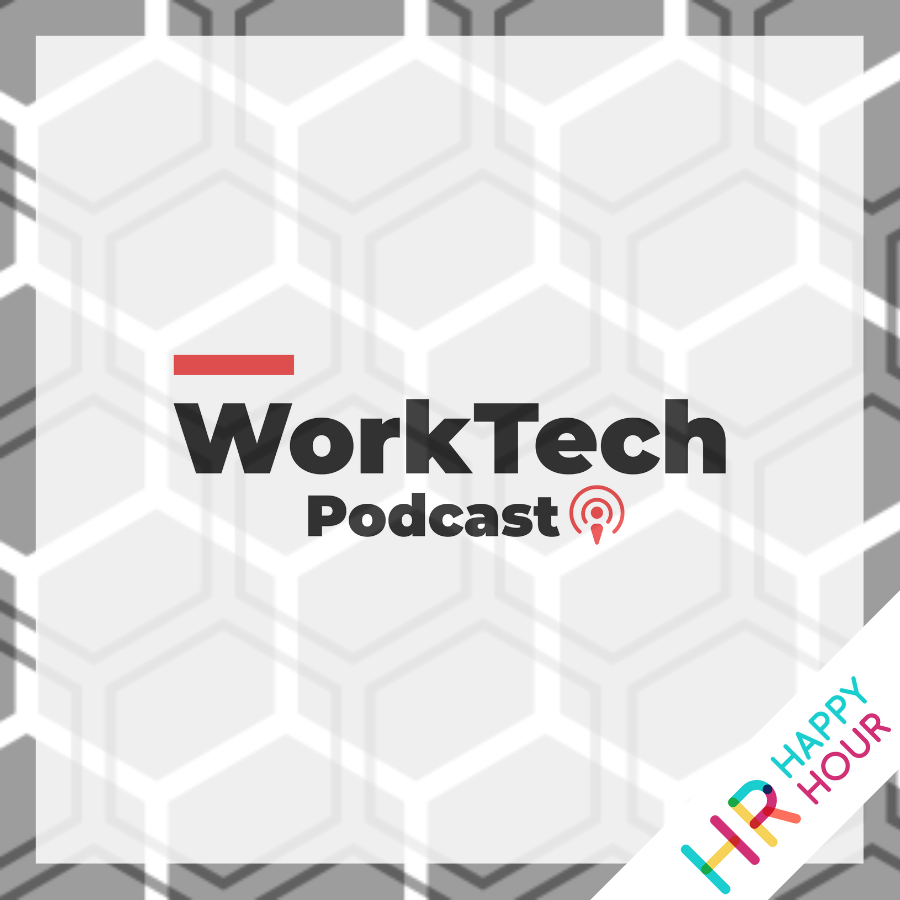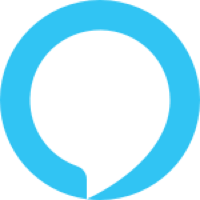Beeline Acquires Utmost and Leads the Market into Total Talent
Hosted by

George LaRocque
Founder and Principal Analyst, WorkTech
About this episode
WorkTech episode 1 – Beeline Acquires Utmost and Leads the Market into Total Talent
Host: George LaRocque, WorkTech Founder
Guest: Colleen Tiner, SVP Strategy, Product, and Partnerships & Dan Khublall, Director of Product Growth and Strategy
In this episode, Colleen Tiner and Dan Khublall join George LaRocque to discuss Beeline’s recent acquisition of Utmost and the moves they’re making to lead the market to “total talent.”
– What led to Beeline’s acquisition?
– Rapidly changing workforce environments and what that means for talent
– Supplier and true talent diversity
– Why is PII so important to companies?
Thank you for joining the show today! Remember to subscribe wherever you get your podcasts.
Transcript follows:
George LaRocque 0:13
Hi, everyone. This is the WorkTech podcast brought to you by WorkTech. This is George LaRocque. I’m your host, and this is where we explore everything related to the future of work, and the technology and people that are shaping it. Welcome. Hi, everyone. Welcome to WorkTech, we have a couple of industry news items that have come from Beeline recently. Beeline is a market leading contingent workforce solution. And they announced the acquisition of Utmost which provides customers a total talent solution. And this was announced right after Beeline’s announcement of new capabilities that give contingent workers full control over their PII that’s personally identifiable information. Both of these announcements are interesting in their own right. And I’ve got the two best possible people to fill us in on the details, and what this all means for Beeline, its customers and for the market. I’m joined by Colleen Tiner, Beeline’s, SVP of Strategy, Product and Partnerships. And Daniel Khublall, Beeline’s, Director of Product Growth and Strategy. Welcome Colleen and Dan.
Colleen Tiner 1:32
Thanks, George.
Dan Khublall 1:33
Yeah, thanks for having us.
George LaRocque 1:34
Well, thanks for being here. And I’m really excited to have this conversation with you. I find all of this new, super interesting. I mean, we’ve seen the contingent workforce on this steep growth trajectory for decades. It’s a big market and a big trend, the workforce is you know, some depending on who you talk to between 40 and 50%, contingent that was accelerated through the events of 2020 and the current economic cycle, and they’re, it’s accelerating even more. And now I’ve known Beeline as an innovator in this space as a vendor management system VMFS. But for those that don’t know, Beeline and how you’ve evolved? Can you share a little bit about you know, what Beeline is, and a little little bit about yourselves and your roles?
Colleen Tiner 2:27
Sure, I’ll, I’ll get us started. George, first, thank you for inviting us to your podcast. It’s an exciting time for workforce technology. And it’s really exciting to see a lot more focus on workforce tech. So I’m happy to be here and share a little bit more about about Beeline. So our feeling is the technology behind many of the world’s most successful extended workforce programs. So even that that label of extended workforce is relatively new it you know, in the past contingent workers, temp workers, it’s become a much more strategic thing for most companies. And it really is an extension of their employee workforce. So that’s why it’s evolved into the the labeling of extended workforce. And Beeline has evolved with it from BMS, as you mentioned, to a platform. And that platform really supports the population of non employees that are sourced through suppliers, and other providers, service providers, consulting firms, gig gig providers, digital platforms, etc. To enable our our companies, our clients, more agile business processes by scaling their overall workforce capacity quickly, so they can support their business needs through a scalable workforce. And that’s made up of extended workers. So our platform is specifically tailored to the needs of each constituent. So what’s different about the extended workforce than the employee workforce, is there’s not just an employee and an employer, there is a buyer of talent, there is a supplier or distributor of talent, and there’s also the talent themselves. So we our platform supports that in that trifecta, as well as the managed service providers that help clients manage this growing as you mentioned, population of workers.
Colleen Tiner 4:23
So our platform is used to find workers manage and pay the suppliers and the workers for their for that talent and the productivity that they do. For me specifically, I am head of product at Beeline and I’ve been in the extended workforce industry for over 17 years. I love this industry. I love seeing people get to work and have opportunities to do really interesting projects. I love seeing the agility that it provides companies through major events, such as the pandemic, but also major growth events when they need to scale very quickly in the recovery cycle. It’s In an exciting space to be, when I started extended workers were less than 20% of the overall workforce 17 years ago, and now that it’s grown to, as you mentioned, nearly 50%. And that really means 50% of the people in our customers, company meetings, calls, delivering on their projects and their outcomes are extended workforce, it’s really interesting to see that it’s not your typical temp worker that may be brought in, was brought in in the past to fill somebody out on leave for some reason. But these are truly strategic roles that are used to scale businesses. So exciting times. With that, I’ll pass it, Dan, to you so you can share a little bit about yourself.
Dan Khublall 5:41
Okay, thanks, Colleen. So, I actually have a similar background to Colleen but I was actually on the client side. So I also have been in the in the industry for about 17 years going back to 2005, where I started as a reporting analyst and a contingent labor program where Beeline was actually the the BMS. And I I learned about the industry just from understanding the processes of bringing people in and out, I learned how big of population the non employees were back then. And today, I’m I’m super proud to see companies leveraging this workforce even more than ever, and we know that the pandemic drove some of that. But I think just the way we work has changed that. My career has been not just at that one program, I started off at JPMorgan as a contractor in that program, and then I went to Citibank, and then T ICRAF, and runners and then now I’m at Beeline as the work on colleagues team. And I, my role is to look at our product strategy and growth around where do we want to go in the future? And how can we best serve our clients and also provide the best value to this to this workforce? That is the nonemployee?
George LaRocque 6:44
Well, it’s it’s really interesting, you know, your backgrounds and how that fits within, you know, how you’re helping the lot. I mean, I guess, at some level, it makes sense. But you’ve come from the industry, which is pretty unique. I mean, most most, I don’t get to talk to folks who have been in the industry, I’ll say, almost as long as I have. I remember when Beeline started. And it was like, you know, do you think this VMFS thing will last? And you know, looking from the outside? And you know, I feel like not only did it last and did it, you know carve out what has become a massive market in the space. But with all of the events, it’s almost like getting its do again, like get like there’s this there’s this real shift in the workforce, we just we can’t find people, we can’t retain people, people want more flexibility. And with the economic situation right now, it’s all of these things result in individuals leaning into more flexible work models, and with employers leaning into the contingent workforce because of it. So I want to I want to dig in a little bit. So let’s start with the utmost acquisition. I noticed. Like I’ve talked, we’ve talked at a high level about what’s happening in the market. But But what was happening that led beeline to this acquisition?
Colleen Tiner 8:25
Yeah, I’ll answer that one. George, this is a super exciting acquisition for us. And I think for our customers, both our Beeline customers, as well as most customers, there were really, there’s really two big dynamics. And you mentioned some of them, one has to do with the demand for talent. And that so that’s the demand side of the equation, companies are facing rapidly changing workforce environments. Whether that’s the talent shortage that you mentioned, there’s also a lot more regulations coming down around talent, specifically, you know, always related to independent contractors, that’s a very dynamic regulatory environment. But but the same boats true for different countries, specific regulations around contingent workers in general. There’s some dramatic shifts in dynamics around the removal of geographical boundaries for where talent can be sourced companies who were competing and, you know, just the San Francisco market or, or even the Texas market there. It’s now everyone is your competitor. And every every market is your opportunity for talent. So that’s a whole new dynamic, and it gets even more complex. When you think about country specific brown boundaries. And that impacts things like taxes and, you know, different regulations that you have to support for the contingent workforce. It’s really interesting set of dynamics there. And then another one that we’re seeing is also really spurred up post pandemic was building prior to and has really accelerated since is the focus on diversity, equity and inclusion strategies, that’s really brought HR much closer to the contingent workforce. And their interest in understanding the contingent workforce as a diverse talent source, as well as representation of, you know, their Diversity, Equity and Inclusion strategies and the impact of those strategies. So that’s an interesting area, we’ll talk a little bit more about that.
Colleen Tiner 10:28
The other point of view or or dynamic, if you will, is from the other end of the equation, which is the supply and the suppliers of talent, whether it’s staffing agencies or consulting firms, or outsourcers, or gig platforms, as I mentioned before, and the talent themselves who are the supply side of the equation, there’s a lot of things happening from their point of view, increasing data privacy, other regulations that are that are shining a light on the need for more automation and transparency, that enables both suppliers and talent, to have a more active role in the entire process, and have things like access to their data. And what’s happening in the process is becoming more important, more and more important. So we’ve been, you know, very focused on innovation that prepares our clients for quickly adapting to a lot of these changes. The good thing is we were we were in that process, we launched the platform approach in 2021. We had been working on it for two years prior to that. And so this acquisition about most is very natural, it enables us to bring to our platform, total talent insights, a modern integration, platform and stack and a very future forward concept for workflow that I think will be hugely impactful to the flexibility of things like global sourcing, being able to look for talent without necessarily knowing where you want to where you where you find it, or having a predisposition to where you might find that talent. So that’s, that’s really what prompted it. As we dug into our evaluation of them, you know, what, what we found that was incredibly compelling was that we both share the belief and the vision, that the future of work will be powered by a technology that really unlocks the limitless potential of every business and every individual for the extended workforce through the extended workforce, I should say. And we were also in complete alignment on how to realize that future that vision, and that’s with a platform that specifically tailored to the needs of each participant, the end clients and their managed service providers, the suppliers and the talent themselves. We share our growth ambitions. And this really accelerates our innovation roadmap for our current customers, and unlocks our ability to reach new markets as well. And really bring the Beeline platform to more companies.
George LaRocque 13:06
Yeah, that’s, it seems like such a such a great acquisition and merger from a product product perspective from a market perspective. I’m curious, you, you mentioned total talent. And I noticed in the positioning the announcement around the the acquisition, it was used a couple of times in the messaging around that what what does total talent mean? To Beeline? How does how and how does Utmost help? You know, reinforce that?
Colleen Tiner 13:44
Yeah, the phrasing of totals, how imagine that has been for years. Aspirational, ambiguous. Sure. The markets been learning hrs quite a bit saying that, you know, it’s a different thing for us than it is for for contingent, for instance. And we really view it and have developed a position over the years and talking with our customers and talking with our managed service provider partners and supplier partners, that it’s it’s about total workforce. So due to call employment risks and unique business processes associated with extended workers versus employees, there are definitely things about employees and non employees that should be handled differently. However, there are things that should be considered total workforce approaches. So when we think about that total talent acquisition, really not having a predisposition on employee or non employee, but saying I have this business need and where is the best place to source that need? Is it through, you know, an employee approach or is it through a contingent approach? Approach and being more strategic there? That’s an opportunity for a total workforce approach. And then in other areas, compliance areas like background checks, are we providing a consistent background checking process across our total workforce. I mentioned earlier, the word the extended workforce being 50% of your total total workforce. Well, if that’s the case, the point of background checks is around risk mitigation. They should be that risk should be mitigated at the same level for all workforce.
Colleen Tiner 15:20
Participants are emergency and business continuity, communications and planning. There’s absolutely no reason that extended workers who are in the building, for instance, that might be seeing a closure due to a massive weather event to be getting a different communication than the employees that are in the building. That’s a that’s an example we hear over and over skills analysis and workforce planning. Rather than just always going out to market for new skills or or new talent needs, being able to holistically look at your overall workforce, contingent and employees and being able to understand what what skills you have and can be redeployed or reused in new ways. That’s, that’s saving a lot of time, a lot of effort, a lot of productivity, if you can maximize what you already have. I mentioned compliance. There’s also the component of auditing when it comes to compliance. Did everyone complete the right steps? Did they have the right access? That should be a total workforce approach? And then, of course, I mentioned earlier Diversity, Equity and Inclusion strategies. We’re hearing more and more that the extended workforce is a basic contributor to extended to DNI strategies, and really should be included in DNI strategies rather than excluded.
George LaRocque 16:36
Yeah, you know, I’ve been having conversations with employers about ESG, and especially any public company. You know, the SEC has now said, you know, you have to report on it, you know, environmental, societal and governance, any claims that you’ve made any human capital claims that you’ve made, and one of the things that has come up is supplier diversity? And, you know, it’s something that needs to be reported on, and now, it’s falling under, you know, HR and talent. And it sounds like a lot of these initiatives that, you know, a couple of decades ago, we would have said, well, these are, you know, when thinking about the contingent workforce, we thought for the for bigger companies and bigger projects, it was a procurement, you know, issue for them to deal with. It’s now are you finding it partnership between procurement and HR? Or is HR getting, you know, in a position with more oversight over this, this part of the workforce?
Colleen Tiner 17:49
We’re definitely seeing a bridge. And actually, it’s really interesting that DNI specifically both supplier diversity and true talent, diversity are, are bridging are acting as a catalyst for a bridge between HR and procurement in in ways we haven’t seen before. Dan, I know you’ve been talking to a lot of customers about this. And I’d love to get get your perspective.
Dan Khublall 18:14
Yeah, a lot of companies have awesome, you know, initiatives of creating a more inclusive environment. And you have to ask yourself, if you are trying to meet corporate goals of inclusion, and you’re trying to make sure that you’re collecting demographic information on the population that works in organization, are you measuring the non employees? And that’s what HR professionals are saying, can we get non employee stats, and that’s not something new. That goes back to you, when I in all four programs I’ve run I’ve managed, or I’ve been part of HR has has routinely come and said, Do you have any demographics on the nonemployees? Can you tell us anything about them, and it’s been a struggle. So we’re, we’re excited to see that that remains to be a goal for HR. And that is the bridge that is where they, they say, Hey, we need to know more about these folks. And, you know, we’re excited to see us starting to solve for that. Because it’s so important. And everyone’s asking me about it.
George LaRocque 19:07
Wow, you know it. You mentioned earlier that this was aspirational, and it sounds like this is you know, much less so now with a platform like this I’m curious how so much of what you’ve both talked about here. I can hear the impact for customers but but what’s what’s the impact of this as a as a platform for your customer today and how has this been received on both sides up most and Beeline customer bases.
Colleen Tiner 19:42
Sure, specifically on the acquisition? What’s really exciting is most global worker tracking product, actually we’re will be rebranding that it’s actually a global workforce intelligence product, it’s much more than just a worker tracking, incredibly powerful solution that enables, I should say, a total talent intelligence view, it makes total talent intelligence a reality. So for instance, our clients can view in real time and in aggregate, both their employees and non employee workforces by location and reporting structure in one place, with their approach, they get insights without the risk of commingling that employee and non employee data in the same you know, in one ERP or HCM, which introduces co employment concerns, and, and allows them to look at things for instance, I mentioned earlier, audit compliance, it allows a client to be audit ready at any point in time when it comes to the workforce process. Who in your entire workforce across your entire workforce has not completed maybe certain steps that are required so you can get ahead of that audit? Make sure that when that audit comes around, and and frankly, to mitigate that risk before that, that risk exposure happens? You have visibility into Are we are we complying with our internal processes and with our regulations, and we can flag with their global workforce intelligence product, those anomalies that might stand out and say, Hey, there’s something you should look at here. That also gives us the ability to introduce that DNI equation and look at global workforce intelligence from an aggregate view as it pertains to diversity, or skills, that’s the other area that enables so it’s super exciting time.
Colleen Tiner 19:49
I would say also, there’s some more pragmatic things that it brings for our customers today. And that’s the, their approach to connectivity. It’s a game changer for us. It accelerates our roadmap. They bring over 1000 rebuilt connectors to enterprise and third party application integrations. That’s something we’re going to be working on right away pulling pulling into the platform. They have a really modern, simplified workflow and form concept, it makes it possible to bring what we bring to enterprise level today for extended workforce management, to smaller companies who are growing their extended workforces, and don’t yet have a solution. And there really isn’t one in the market for companies to sort of fall into that. Not big enterprise, but slightly smaller, but yet meaningful amount of contingent workers workers. And the customer reaction has been, has been incredible, I would say that customers are very excited about the global workforce intelligence that I mentioned, enables them to answer the one question that has eluded really enterprise companies for decades, how many people does it take to run your business? If you you can answer it in employees, and you can answer it in some of your extended workforce. But this this product, and offering from from utmost allows them to realize that answer, you know, instantly and in real time, which is which is exciting.
George LaRocque 23:06
Yeah, that probably the most succinct way that I’ve heard it. But you know, how many people does it take to run your business? That That question is surprisingly hard to answer. Yes, yeah. And I can see how this approach helps. So I want to, you know, there’s been so much to talk about, I’m going to move quickly, but I want to get into the conversation around PII being in the contingent workers control. You know, you’ve you’ve talked about, you know, putting the, the worker, you know, at the center, but you know, why is this PII issue important?
Colleen Tiner 23:57
Yeah, this is a really important question. It’s something we’ve spent over a year, really making sure we understand and consult as Dan mentioned this earlier, how important this strategy is for us. Just by way of background, Beeline is about 700 employees, we’re a company with considerably smaller footprint by number of employee employees than almost all of our customers. And you mentioned ESG, and how important ESG is for our customers. And when we look at ESG, we have to look at not only are what are we doing from an ESG perspective, but what is our responsibility as a company that connects hundreds of companies to the millions of people that make up the global extended workforce. That’s a big responsibility. So as we look at that, that’s our our way of impacting ESG strategies is to really look at that societal impact. And that really boils down to diversity and that’s supplier diversity as well as talent diversity. When it comes to PII. Have we, we had to really look at that differently because extended workforce programs have been stuck at supplier diversity, we help them support their supplier diversity initiatives incredibly well today. Most almost all of our customers have some sort of supplier diversity program that is enabled and tracked by Beeline. But really, they have not realized their goals for talent diversity, for the extended workforce, because of the complication of PII specifically, kind of going back to your question. So I think this will be great. Dan, I know you’ve you’ve done the research in this area and spoken with the legal departments and compliance departments, that of all the different groups, and I think it’d be great for you to share with the audience here, kind of what we found out and why it’s been so complicated to solve.
Dan Khublall 25:51
Yeah, I guess to put it really simply collecting demographic information, if we think about that is a sensitive step. And you have to do it at the right place at the right time and in the right way, in order to get meaningful information. A lot of workers may not trust the process or may be suspicious of Why am I being asked for this data? What is it being used for? How will it be used either for or against me. And so when we think about PII, your demographic information is PII. And companies need that they need access to understand who you are, and your demographic makeup so they can meet their diversity goals and truly create an inclusive, inclusive environment again, but that is a it’s almost like a chicken and an egg. You have to think of a way to create an inclusive environment so that you get people that are open to be who they are. But you also need to understand who people are to create an inclusive environment. So if we think about why, why are we focused on this right now, it’s a problem that needs to be solved. It’s a problem we we feel it’s very important. ESG is, is important for companies and the way we can do that right now the way we can meaningfully make an impact is by thinking of ways of how can we help companies understand their non employee workforce, which is quarter Beeline, but how can we get them information that is extremely hard to get extremely hard to get in a meaningful way. And that’s why the concept of giving people control their PII. And then also asking them once we build that, that’s that container of trust. If you wait, if you may, we think that’ll move the needle.
George LaRocque 27:28
So, Dan, you mentioned that I like that container of trust. And I know in a previous conversation, we talked about this, like the visual was a triangle between the the worker, the supplier and the employer? And how how does you know that container of trust and the PII fit within that? So if you’re, you know, how do you protect that PII, but still add value to those other constituencies.
Dan Khublall 28:02
So I love the fact that you said worker, supplier and employer because we’re talking about non employees, right? So there’s actually a worker supplier and then end client user, I would say, okay, and that’s why I think HR and HR organizations look for systems like the lines, you manage the nonemployees. Because it’s not an employment relationship. It’s not as easy as collecting that data, where when I got hired at Beeline, I filled out a survey that told that gave my demographics, but I knew that was going directly to HR. And that was going directly to the company, I worked for my paycheck. My my job, everything is V line with non employees, they work for a supplier, but they serve the end client. And so we have to think of ways to enable a system of trust, but also putting people in control that data and letting them know who would like why is it being connected? And why is it being collected, and how’s it going to be used. So the triangle concept is is important for, for people to think about Beeline as as serving three pillars, every persona and that’s what we that’s what I would call the worker supplier and client, their personas. Historically, systems like Beeline, and this is true with any BMS, have really been focused on just the end client, because that’s where a BMS, or you know the old systems emerged from it was a system of record, where companies would open racks and have the requisition sourcing process happen, and then act and act as a system of record for the worker to enter time and then generate invoices.
Dan Khublall 29:27
Today, there’s a lot more to it, right. VLAN has a lot more than just opening a rack and filling on timesheets. All of that translates into data. So the if you want to think about the triangle, think about it as a way for each persona to be fully in control of the data that is theirs, but also have transparency as to how that data that’s theirs, could be used should be used and maybe used. And so that is that’s the visual I can give you is that you as a person let’s take talent for example. You have your own personal information that doesn’t change for Regardless of where you work, but when you work at a company, they may need information to classify you or to meet audit requirements or to understand you better, and you need to give that information make it accessible. But should companies have access to that data in perpetual in perpetuity? Shouldn’t they? No. Shouldn’t that company notify you why that data is being collected? And Shouldn’t you have transparency to understanding how that data is being used? And then that to me builds trust with the with the worker. And I think there’s a direct correlation between people’s trust and the accuracy of data that they enter. If you think about going to a place where you’re asked to provide information, if you don’t know why that information is being asked for, or you’re even suspicious of it being asked for you may put in bogus data, just because you’re not sure why you’re being asked for it. But you feel like you have to provide it. So you just put something in. I think that’s been the conundrum. Past with non employees and demographic data, it’s incredibly hard to build trust with people, it’s incredibly hard to collect to collect demographics. And with a non employee, I think going back to what you said, the worker, supplier, and employer, these people are employees of staffing organizations that are not employees at the end client. So it’s, we want to bring our end client and bring the HR organizations and our clients access to that data, but also make sure the data is accurate.
George LaRocque 31:17
Yeah, that’s, that makes so much sense. And I you know, we’ve talked so much about what’s happening in the market and and all of this innovation, I know that there’s a lot coming as you’ve you’ve brought these platforms together, and a lot more coming around total talent and and how you’re giving workers more control. where can folks go to find out more about the deal about you know, your your product announcements, what’s the easiest way to find out to find more about Beeline.
Colleen Tiner 31:53
You can go to beeline.com to learn more about Beeline. There’s a section for news information, you can read the utmost acquisition press release, you can also go to LinkedIn, we have a lot of information and resources available through LinkedIn, you can connect with Dan or myself on LinkedIn as well. We are both very active on LinkedIn and are happy to connect with you. And always happy to hear more about the questions you might have in the market as well. So yeah, those are some ways you can reach us.
George LaRocque 32:26
That’s great. And I really enjoyed this. Thank you for giving us so much time. I’ll put the links in the podcast notes, wherever you’re here listening to this. And I want to thank you both for being here. And thanks. Thanks for giving us so much time.
Dan Khublall 32:45
Thanks, George. Yeah, thanks very great.
George LaRocque 33:04
Well, that does it for another episode of the WorkTech podcast. I want to thank you all for being here and sharing some of your day with us. I really appreciate it. I also want to thank Coleen Tiner and Dan Khublall again, for being here and sharing all of the news coming out of Beeline. If you’d like to learn more about the Utmost acquisition or any of the news from Beeline as they lead the market into total talent. You can do that@beeline.com If you want to learn more about the people and technology, shaping the future of work, there’s one place for that and that’s at 1worktech.com. I’m George LaRocque, your host and the founder of WorkTech. Until next time.
Transcribed by https://otter.ai

Sponsored by
Published
Tags
Share

H3 HR Advisors
Experienced HCM consulting, advising, and speaking services.
Talk to us
If you want to know more about any aspect of HR Happy Hour Media Network, or if you want to find out more about a show topic, then get in touch.






